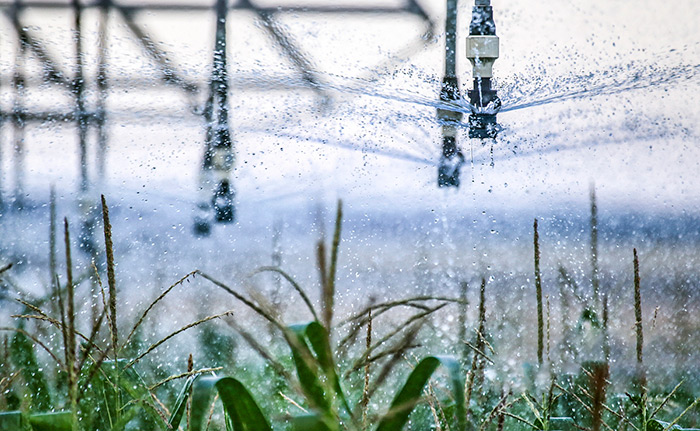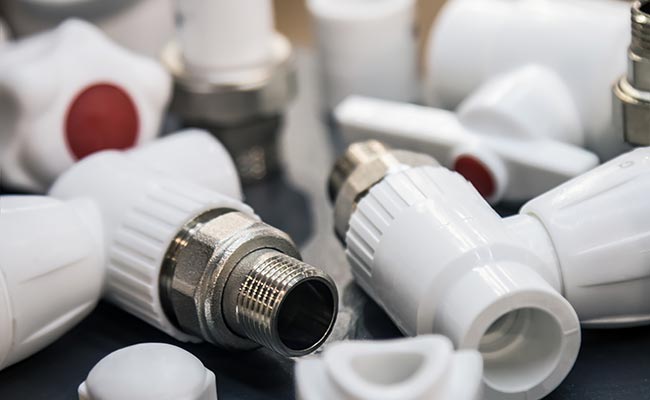သင်သည် စနစ်တစ်ခုကို ဒီဇိုင်းဆွဲနေပြီး သင်၏ အစိတ်အပိုင်းများကို ယုံကြည်ရန် လိုအပ်သည်။ မအောင်မြင်သောအဆို့ရှင်သည် ငွေကုန်ကြေးကျများသောအချိန်နှင့် ပြုပြင်မှုများကို ဆိုလိုနိုင်သည်၊ ထိုတတ်နိုင်သော PVC အစိတ်အပိုင်းသည် ၎င်းနှင့်ထိုက်တန်မှုရှိမရှိ မေးခွန်းထုတ်စေသည်။
အရည်အသွေးမြင့် PVC ဘောလုံးအဆို့ရှင်သည် အပျိုစင်ပစ္စည်းများနှင့် မှန်ကန်စွာအသုံးပြုထားသည့်အတွက် လွယ်ကူစွာ 10 နှစ်မှ 20 နှစ်အထိ ကြာရှည်ခံနိုင်ပြီး မကြာခဏဆိုသလို တပ်ဆင်ထားသည့် ပိုက်စနစ်၏ သက်တမ်းတစ်ခုလုံးအတွက် တာရှည်ခံပါသည်။ ၎င်း၏သက်တမ်းသည် အရည်အသွေး၊ အသုံးချမှုနှင့် ပတ်ဝန်းကျင်အပေါ် မူတည်ပါသည်။
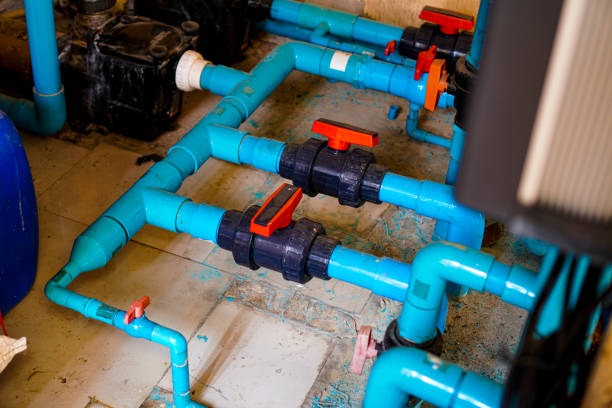
ဒီမေးခွန်းက ကျွန်တော်တို့ ဘာလုပ်နေသလဲဆိုတဲ့ အရင်းခံပါ။ အင်ဒိုနီးရှားရှိ ကျွန်ုပ်တို့၏ အဓိကဖြန့်ချီရေးလုပ်ဖော်ကိုင်ဖက် Budi နှင့် စကားပြောဆိုမှုကို သတိရမိပါသည်။ စိုက်ပျိုးရေးသမဝါယမကုမ္ပဏီကြီးတစ်ခုဖြစ်သည့် သူ၏ဖောက်သည်တစ်ဦးသည် ကျွန်ုပ်တို့ကိုအသုံးပြုရန် ချီတုံချတုံဖြစ်ခဲ့သည်။PVC အဆို့ရှင်များ. ၎င်းတို့သည် နှစ်အနည်းငယ်ကြာတိုင်း ၎င်းတို့၏ သံချေးတက်နေသော သတ္တုအဆို့ရှင်များကို အစားထိုးလေ့ရှိပြီး “ပလပ်စတစ်” အဆို့ရှင်သည် ကြာရှည်ခံမည်ကို မယုံကြည်နိုင်ပေ။ Budi သည် ၎င်းတို့၏ ဓာတ်မြေသြဇာ အထူထပ်ဆုံး ဆည်မြောင်းလိုင်းများတွင် အနည်းငယ်ကြိုးစားရန် ဆွဲဆောင်ခဲ့သည်။ အဲဒါ လွန်ခဲ့တဲ့ ခုနစ်နှစ်ကပါ။ ပြီးခဲ့တဲ့လက သူနဲ့ကျွန်တော် check in ဝင်ခဲ့ပြီး တူညီတဲ့အဆို့ရှင်တွေ ကောင်းကောင်းလည်ပတ်နေသေးတယ်လို့ သူပြောခဲ့တယ်။ တစ်ခုတည်းကို အစားမထိုးခဲ့ကြပါ။ အဲဒါက ကွာလတီခြားနားမှုပါ။
PVC ဘောလုံးအဆို့ရှင်၏ သက်တမ်းသည် အဘယ်နည်း။
ပြုပြင်ထိန်းသိမ်းမှုနှင့် အစားထိုးစရိတ်များအတွက် စီစဉ်ရန် လိုအပ်ပါသည်။ အမည်မသိ သက်တမ်းတစ်ခုရှိ အစိတ်အပိုင်းတစ်ခုကို အသုံးပြုခြင်းဖြင့် သင့်ဘတ်ဂျက်ကို ပြီးပြည့်စုံသော ခန့်မှန်းချက်ဖြစ်စေပြီး မမျှော်လင့်ထားသော ဆုံးရှုံးမှုများဆီသို့ ဦးတည်သွားစေနိုင်သည်။
အရည်အသွေးပြည့်မီသော PVC ဘောလုံးအဆို့ရှင်၏ မျှော်မှန်းသက်တမ်းသည် ပုံမှန်အားဖြင့် 10 နှစ်မှ 20 နှစ်အထိဖြစ်သည်။ သို့သော်၊ စံပြအခြေအနေများ—အိမ်တွင်း၊ ရေအေး၊ မကြာခဏအသုံးပြုမှု—၎င်းသည် ပို၍ကြာရှည်ခံနိုင်သည်။ အဓိကပြောင်းလဲမှုများမှာ ပစ္စည်းအရည်အသွေး၊ ခရမ်းလွန်ရောင်ခြည်ထိတွေ့မှုနှင့် လည်ပတ်မှုဖိအားတို့ဖြစ်သည်။
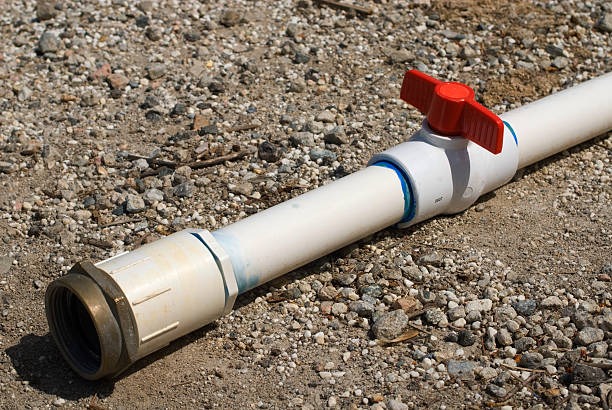
အဆို့ရှင်၏သက်တမ်းသည် နံပါတ်တစ်ခုတည်းမဟုတ်ပါ။ အရေးကြီးသောအချက်များစွာ၏ရလဒ်ဖြစ်သည်။ အရေးကြီးဆုံးမှာ ကုန်ကြမ်းဖြစ်သည်။ Pntek တွင်၊ ကျွန်ုပ်တို့သည် 100% virgin PVC resin ကို သီးသန့်အသုံးပြုပါသည်။ ၎င်းသည် အမြင့်ဆုံး ခွန်အားနှင့် ဓာတုဗေဒ ခံနိုင်ရည်ရှိမှုကို သေချာစေသည်။ စျေးသက်သာသော valves များကို အသုံးပြုလေ့ရှိသည်။"regrind" (ပြန်လည်အသုံးပြုထားသော PVC)ဆတ်ဆတ်ထိမခံနိုင်သော၊ နောက်ထပ်ကြီးမားသောအချက်မှာ နေရောင်ခြည်မှ ခရမ်းလွန်ရောင်ခြည် ထိတွေ့မှုဖြစ်သည်။ Standard PVC သည် နေရောင်ထဲတွင် ထားခဲ့ပါက အချိန်ကြာလာသည်နှင့်အမျှ ပျက်စီးသွားနိုင်သောကြောင့် ရေသွင်းခြင်းကဲ့သို့ ပြင်ပအသုံးချပရိုဂရမ်များအတွက် သီးခြား UV-ခံနိုင်ရည်ရှိသော မော်ဒယ်များကို ပေးဆောင်ထားပါသည်။ နောက်ဆုံးအနေနဲ့ ဖျံတွေအကြောင်းစဉ်းစားပါ။ ကျွန်ုပ်တို့သည် လှည့်ပတ်မှု ထောင်ပေါင်းများစွာကို ခံနိုင်ရည်ရှိပြီး ချောမွေ့ပြီး ပွတ်တိုက်မှုနည်းသော တံဆိပ်ကို ပေးဆောင်သည့် တာရှည်ခံ PTFE ထိုင်ခုံများကို အသုံးပြုပါသည်။ စံရော်ဘာဖျံများပါသော စျေးသက်သာသောအဆို့ရှင်များသည် ပိုမိုမြန်ဆန်စွာ ကုန်ဆုံးသွားမည်ဖြစ်သည်။ အရည်အသွေးကို ရှေ့တန်းတင်ရင်း ရင်းနှီးမြုပ်နှံခြင်းသည် အသက်တာရှည်မှုကို အာမခံရန် အသေချာဆုံးနည်းလမ်းဖြစ်သည်။
သက်တမ်းသတ်မှတ်ခြင်း အဓိကအချက်များ
| အချက် | အရည်အသွေးမြင့် Valve (အသက်ပိုရှည်) | အရည်အသွေးနိမ့် Valve (အသက်တိုတို) |
|---|---|---|
| PVC ပစ္စည်း | 100% Virgin Grade PVC | ပြန်လည်အသုံးပြုထားသော "Regrind" ပစ္စည်း |
| ခရမ်းလွန်ရောင်ခြည်ထိတွေ့မှု | UV ဒဏ်ခံပစ္စည်းများကို အသုံးပြု | ပုံမှန် PVC သည် နေရောင်တွင် ကြွပ်ဆတ်သည်။ |
| ပင်လယ်ဖျံများ (ထိုင်ခုံများ) | တာရှည်ခံ၊ ချောမွေ့သော PTFE | ပျော့ပျောင်းသော EPDM ရော်ဘာသည် မျက်ရည်ထွက်နိုင်သည်။ |
| လည်ပတ်မှုဖိအား | ၎င်း၏ဖိအားအဆင့်သတ်မှတ်ချက်အတွင်းကောင်းစွာအသုံးပြုသည်။ | ရေတူ၊ |
PVC ဘောလုံးအဆို့ရှင်များသည် မည်မျှယုံကြည်စိတ်ချရသနည်း။
သင်ထည့်သွင်းနိုင်ပြီး မေ့ပျောက်နိုင်သော အစိတ်အပိုင်းတစ်ခု လိုအပ်ပါသည်။ စိတ်မချရသော အဆို့ရှင်ဆိုသည်မှာ ယိုစိမ့်မှုများ၊ စနစ်ပိတ်သွားခြင်းနှင့် ရှုပ်ပွနေခြင်း၊ စျေးကြီးသော ပြုပြင်မှုများအတွက် အမြဲမပြတ် စိုးရိမ်ပူပန်နေခြင်းကို ဆိုလိုသည်။ သင်မတတ်နိုင်သောအန္တရာယ်တစ်ခုဖြစ်သည်။
၎င်းတို့၏ ရည်ရွယ်ချက်မှာ ရေအေးစီးဆင်းမှုကို ထိန်းချုပ်ရန်၊အရည်အသွေးမြင့် PVC ဘောလုံးအဆို့ရှင်များအလွန်ယုံကြည်စိတ်ချရပါသည်။ ၎င်းတို့၏ ယုံကြည်စိတ်ချရမှုသည် သံချေးတက်ခြင်းနှင့် သံချေးတက်ခြင်းမှ လုံးဝခံနိုင်ရည်ရှိသော ရွေ့လျားနေသော အစိတ်အပိုင်းများနှင့် ပစ္စည်းအနည်းငယ်ပါသော ရိုးရှင်းသောဒီဇိုင်းမှ လာပါသည်။
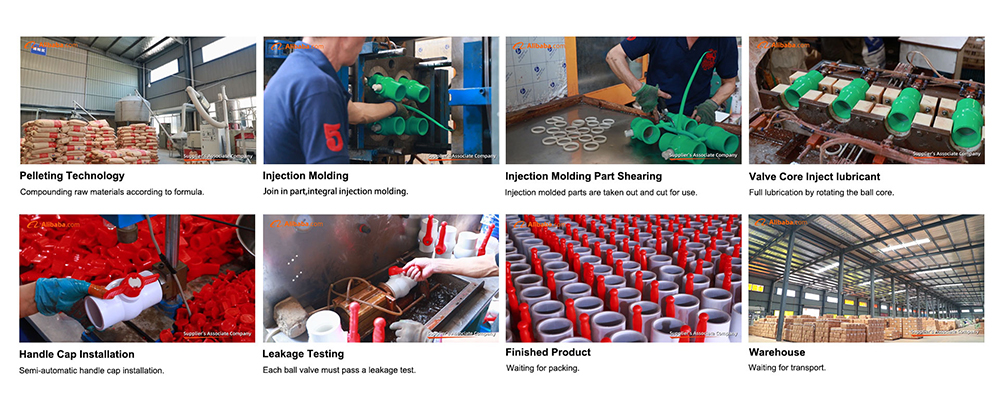
အဆို့ရှင်၏ ယုံကြည်စိတ်ချရမှုသည် ဘုံပျက်ကွက်မှုများကို တွန်းလှန်နိုင်စွမ်းနှင့် ပတ်သက်သည်။ ဤနေရာတွင် PVC သည် အမှန်တကယ်တောက်ပနေပါသည်။ ကမ်းခြေနားက သူ့ဖောက်သည်တွေကို ဒါကိုရှင်းပြဖို့ Budi ကို အမြဲပြောခဲ့တယ်။ သတ္တုအဆို့ရှင်များ၊ ကြေးဝါများပင်သည် နောက်ဆုံးတွင် ဆား၊ စိုစွတ်သောလေတွင် ပျက်စီးသွားလိမ့်မည်။ PVC က လုံးဝမဖြစ်ပါဘူး။ ၎င်းသည် ရေစနစ်များတွင် တွေ့ရသော သံချေးများနှင့် ဓာတုဗေဒဆိုင်ရာ ချေးယူမှုအများစုကို ခုခံနိုင်စွမ်းရှိသည်။ ယုံကြည်စိတ်ချရမှု၏နောက်ထပ်အရင်းအမြစ်မှာ ဒီဇိုင်းဖြစ်သည်။ စျေးပေါသောအဆို့ရှင်များစွာသည် လက်ကိုင်မှပေါက်ကြားမှုကိုကာကွယ်ရန် ပင်စည်ပေါ်ရှိ O-ring တစ်ခုသာအသုံးပြုသည်။ ဒါက နာမည်ဆိုးနဲ့ ကျော်ကြားတဲ့ ကျရှုံးမှုတစ်ခုပါ။ ကျွန်ုပ်တို့သည် ကျွန်ုပ်တို့၏ O-rings နှစ်ထပ်ဖြင့် ဖန်တီးထားသည်။ ၎င်းသည် သေးငယ်သောပြောင်းလဲမှုတစ်ခုဖြစ်သော်လည်း၊ ၎င်းသည် လက်ကိုင်အစက်အပြောက်များကို တိုက်ဖျက်ရန် ရေရှည်ယုံကြည်စိတ်ချရမှုကို သိသိသာသာတိုးမြင့်လာစေသည့် မလိုအပ်သောတံဆိပ်တစ်ခု ပေးဆောင်သည်။ ရိုးရှင်းသော လေးပုံတစ်ပုံကို အလှည့်ကျ ယန္တရားနှင့် ကြမ်းတမ်းပြီး စိုစွတ်ခြင်းမရှိသော ကိုယ်ထည်သည် ရေစနစ်တိုင်းတွင် အားကိုးရဆုံးသော အစိတ်အပိုင်းများထဲမှ တစ်ခုဖြစ်သည့် အရည်အသွေးရှိသော PVC အဆို့ရှင်ကို ဖန်တီးပေးပါသည်။
ယုံကြည်စိတ်ချရမှုက ဘယ်ကလာတာလဲ။
| ထူးခြားချက် | ယုံကြည်စိတ်ချရမှုအပေါ် သက်ရောက်မှု |
|---|---|
| Corrosion-Proof Body ၊ | သံချေးတက်ခြင်းမှ ခုခံနိုင်စွမ်းရှိပြီး အချိန်ကြာလာသည်နှင့်အမျှ အားပျော့သွားခြင်း သို့မဟုတ် သိမ်းသွားခြင်းမဖြစ်စေရန် အာမခံပါသည်။ |
| ရိုးရှင်းသော ယန္တရား | ဘောလုံးနှင့် လက်ကိုင်သည် ရိုးရှင်းပြီး ဖြိုခွဲရန် နည်းလမ်းအနည်းငယ်သာရှိသည်။ |
| PTFE ထိုင်ခုံများ | အလွယ်တကူ ပြိုပျက်မသွားဘဲ တာရှည်ခံပြီး ကြာရှည်ခံသော တင်းကျပ်သော တံဆိပ်ကို ဖန်တီးပေးသည်။ |
| နှစ်ထပ် Stem O-Rings | ယိုစိမ့်မှုများအား တားဆီးရန် မလိုအပ်သော အရန်အရံတစ်ခုကို ပံ့ပိုးပေးသည်၊ အဖြစ်များသော ချို့ယွင်းချက်တစ်ခုဖြစ်သည်။ |
ဘောလုံးအဆို့ရှင်များကို မည်မျှမကြာခဏ အစားထိုးသင့်သနည်း။
သင့်စနစ်အတွက် ပြုပြင်ထိန်းသိမ်းမှု အစီအစဉ်တစ်ခု လိုအပ်ပါသည်။ သို့သော် ကျိုးသွားခြင်းမရှိသော အစိတ်အပိုင်းများကို အားတက်သရော အစားထိုးခြင်းသည် ငွေဖြုန်းတီးမှုဖြစ်ပြီး အကြာကြီးစောင့်ဆိုင်းနေချိန်တွင် ကပ်ဘေးတစ်ခုသို့ ဦးတည်သွားနိုင်သည်။
Ball valves များသည် ပုံသေ အစားထိုးမှု အချိန်ဇယား မရှိပါ။ ၎င်းတို့ကို အချိန်တိုင်းကိရိယာဖြင့်မဟုတ်ဘဲ အခြေအနေအရ အစားထိုးသင့်သည်။ သန့်ရှင်းသောစနစ်ရှိ အရည်အသွေးမြင့် အဆို့ရှင်အတွက်၊ ၎င်းသည် စနစ်၏သက်တမ်းတစ်လျှောက် မည်သည့်အခါမျှ အစားထိုးရန်မလိုအပ်ဟု ဆိုလိုခြင်းဖြစ်နိုင်သည်။
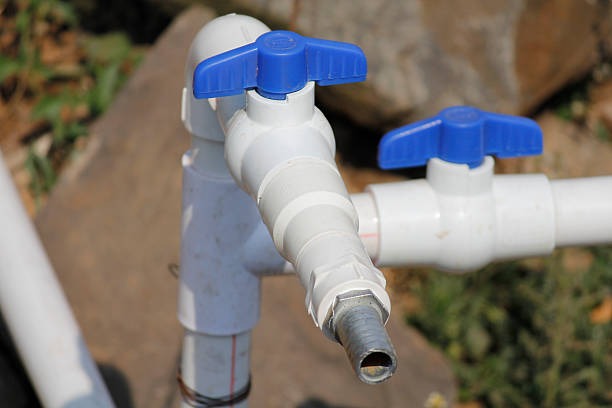
အချိန်ဇယားတစ်ခုအကြောင်း တွေးနေမည့်အစား အဆို့ရှင်ပျက်သွားသည့် လက္ခဏာများကို သိရန် ပိုကောင်းသည်။ Budi ၏အဖွဲ့သည် ဖောက်သည်များအား "ကြည့်၊ နားထောင်၊ ခံစား" တတ်စေရန် သင်ကြားပေးပါသည်။ အဖြစ်အများဆုံးလက္ခဏာမှာ လက်ကိုင်သည် အလွန်တောင့်တင်းခြင်း သို့မဟုတ် လှည့်ရခက်ခြင်းပင်ဖြစ်သည်။ ၎င်းသည် အတွင်းတွင် သတ္တုဓာတ်များစုပုံခြင်း သို့မဟုတ် ဝတ်ဆင်ထားသော တံဆိပ်ကို ဆိုလိုခြင်းဖြစ်နိုင်သည်။ အခြားလက္ခဏာမှာ လက်ကိုင်ပင်စည်တစ်ဝိုက်မှ ငိုခြင်း သို့မဟုတ် ရွှဲနစ်နေသည့် လက္ခဏာဖြစ်ပြီး O-rings ပျက်သွားခြင်းကို ညွှန်ပြသည်။ အဆို့ရှင်ကို ပိတ်ပြီး ရေများ စိမ့်ဝင်နေပါက အတွင်းဘောလုံး သို့မဟုတ် ထိုင်ခုံများသည် ခြစ်ရာ သို့မဟုတ် ပျက်စီးသွားဖွယ်ရှိသည်။ ရိုးရှင်းသော အဖွင့်/အပိတ် ထိန်းချုပ်မှုအစား throttle flow အတွက် ball valve ကို အသုံးပြုပါက ၎င်းသည် ဖြစ်နိုင်သည်။ အဆို့ရှင်သည် ဤလက္ခဏာများထဲမှ တစ်ခုကို မပြပါက၊ ၎င်းကို အစားထိုးရန် အကြောင်းမရှိပါ။ အရည်အသွေးရှိ အဆို့ရှင်သည် ကြာရှည်ခံရန် ဒီဇိုင်းထုတ်ထားသောကြောင့် ပြဿနာတစ်ခုရှိနေကြောင်း ပြောပြသောအခါမှသာ လုပ်ဆောင်ရန် လိုအပ်ပါသည်။
Ball Valve အစားထိုးရန် လိုအပ်ကြောင်း လက္ခဏာများ
| ရောဂါလက္ခဏာ | ဘာကိုဆိုလိုသလဲ။ | အက်ရှင် |
|---|---|---|
| အလွန်မာကျောသောလက်ကိုင် | အတွင်းတွင်းထွက်သတ္တုကို အတိုင်းအတာ သို့မဟုတ် တံဆိပ်မခတ်ပါ။ | စုံစမ်းစစ်ဆေးပြီး အစားထိုးဖွယ်ရှိသည်။ |
| လက်ကိုင်မှ ရွှဲနေသည်။ | ပင်စည် O-rings ဟောင်းနွမ်းသွားပြီ။ | အဆို့ရှင်ကို အစားထိုးပါ။ |
| Off Flow မပိတ်ပါဘူး။ | အတွင်းဘောလုံး သို့မဟုတ် ထိုင်ခုံများ ပျက်စီးနေပါသည်။ | အဆို့ရှင်ကို အစားထိုးပါ။ |
| ခန္ဓာကိုယ်ပေါ်ရှိ အက်ကြောင်းများကို မြင်နိုင်သည်။ | ရုပ်ပိုင်းဆိုင်ရာ ထိခိုက်မှု သို့မဟုတ် ခရမ်းလွန်ရောင်ခြည် ကျဆင်းခြင်း။ | ချက်ချင်းအစားထိုးပါ။ |
PVC check valve သည် မကောင်းနိုင်ပါ။
သင့်တွင် နောက်ကြောင်းပြန်စီးဆင်းမှုကို တားဆီးသည့် check valve တစ်ခုရှိသော်လည်း ၎င်းကို pump line ၏အောက်ခြေတွင် ဝှက်ထားသည်။ သင့်ပန့်မှာ အချုပ်ခန်း သို့မဟုတ် ညစ်ညမ်းသောရေများ နောက်ပြန်စီးဆင်းသွားသည်အထိ ချို့ယွင်းချက်တစ်ခု သတိမပြုမိနိုင်ပါ။
ဟုတ်တယ်၊PVC စစ်ဆေးသောအဆို့ရှင်သေချာပေါက် ဆိုးသွားနိုင်ပါတယ်။ အဖြစ်များသော ချို့ယွင်းချက်များတွင် အတွင်းခန်းတံဆိ့ ပျက်သွားခြင်း၊ လွှဲအဆို့ရှင် ကွဲသွားခြင်း သို့မဟုတ် ရွေ့လျားနေသည့် အစိတ်အပိုင်းသည် ပျက်ယွင်းသွားခြင်း နှင့် အပျက်အစီးများ ပိမိခြင်းတို့ ပါဝင်သည်။
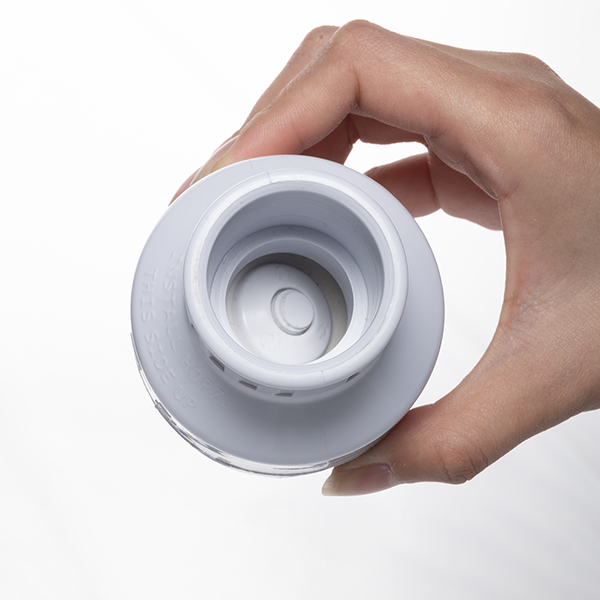
ကျွန်ုပ်တို့သည် ဘောလုံးအဆို့ရှင်များကို အာရုံစိုက်နေချိန်တွင်၊ စစ်ဆေးသောအဆို့ရှင်များသည် အလွန်အရေးကြီးသောကြောင့် ဤမေးခွန်းသည် အလွန်အရေးကြီးပါသည်။ ၎င်းတို့သည် “သတ်မှတ်ထား၍ မေ့ပစ်လိုက်” သည့်အပိုင်းဖြစ်သော်လည်း ၎င်းတို့တွင် ဟောင်းနွမ်းသွားနိုင်သည့် ရွေ့လျားနေသော အစိတ်အပိုင်းများရှိသည်။ အဖြစ်အများဆုံး ပျက်ကွက်တာတွေswing-စတိုင်စစ်ဆေးအဆို့ရှင်ထိုင်ခုံနှင့် အပြည့်အ၀ တံဆိပ်ခတ်ထားခြင်း မရှိပါ။ ဟောင်းနွမ်းနေသော ရာဘာတံဆိပ် သို့မဟုတ် သဲကဲ့သို့ သေးငယ်သော အပျက်အစီးများကြောင့် ဖြစ်နိုင်သည်။ စပရိန်ပါရှိသော စစ်ဆေးသည့်အဆို့ရှင်များအတွက်၊ သတ္တုစပရိန်ကိုယ်တိုင်က နောက်ဆုံးတွင် သံချေးတက်ခြင်း သို့မဟုတ် ပင်ပန်းနွမ်းနယ်စေပြီး ကွဲသွားနိုင်သည်။ အဆို့ရှင်၏ကိုယ်ထည်သည် PVC ဖြင့်ပြုလုပ်ထားသောကြောင့် အလွန်အကြမ်းခံပါသည်။ ဒါပေမယ့် စက်ပိုင်းဆိုင်ရာ အစိတ်အပိုင်းတွေက အားနည်းတဲ့အချက်တွေပါ။ ထို့ကြောင့် အရည်အသွေးစစ်ဆေးသည့်အဆို့ရှင်ကို ဝယ်ယူခြင်းသည် အလွန်အရေးကြီးပါသည်။ တာရှည်ခံတံဆိပ်နှင့် ခိုင်ခံ့သော ပတ္တာယန္တရားပါသည့် ကောင်းမွန်စွာ ဒီဇိုင်းဆွဲထားသော ကိရိယာသည် ယုံကြည်စိတ်ချရသော ဝန်ဆောင်မှုကို နှစ်ပေါင်းများစွာ ပေးစွမ်းနိုင်ပြီး သင့်စနစ်အား နောက်ပြန်မဆုတ်စေရန် ကာကွယ်ပေးပါသည်။
နိဂုံး
အရည်အသွေးမြင့် PVC ဘောလုံးအဆို့ရှင်သည် စနစ်၏သက်တမ်းတစ်ခုလုံးအတွက် မကြာခဏ ဆယ်စုနှစ်များစွာ ကြာရှည်နိုင်သည်။ အချိန်ဇယားမဟုတ်ဘဲ အခြေအနေပေါ်မူတည်၍ ၎င်းတို့ကို အစားထိုးပြီး ခြွင်းချက်၊ ယုံကြည်စိတ်ချရသော ဝန်ဆောင်မှုကို ပေးဆောင်ပါမည်။
တင်ချိန်- ဇူလိုင် ၁၇-၂၀၂၅


